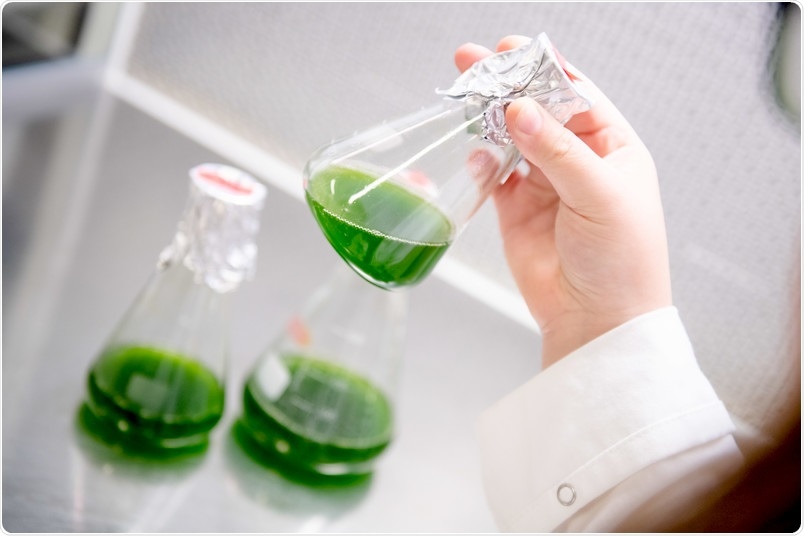A majority of the substances that are used everyday work only in the right three dimensional (3D) structure. These substances can be produced by natural enzymes in an eco-friendly manner, as long as they do not require a co-substrate that is costly to produce even today.

Algae hold great potential for environmentally friendly energy production. Image Credit: © RUB, Marquard.
Now, a team of researchers from Ruhr-University Bochum (RUB) has precisely identified the required enzymes in unicellular green algae.
A more improved option is that living algae can be employed as biocatalysts for specific substances, and they also bring the co-substrate along, producing it in an eco-friendly manner via photosynthesis. The researchers have published their report in the Algal Research journal on June 17th, 2020.
It is a question of 3D structure
Several chemical substances used in food, medicines, or cosmetics can assume slightly different 3D structures, with just one of them creating the preferred medical effect or fragrance. The chemical synthesis of the right substances is usually not eco-friendly, because it needs special solvents or high temperatures.
But in nature, specific proteins certainly exist that create the desired product in water and at mild temperatures. In the process, these proteins often generate the precise 3D structure of the substance required by the industry.
Old yellow enzymes require an expensive additive
These supposed old yellow enzymes, also known as OYEs, owe their name to their natural yellow color. These enzymes, which occur in plants, fungi, and bacteria, have been partly well-explored and provide significant potential for a bio-based economy.
But the enzymes have one drawback: they require the co-substrate nicotinamide adenine dinucleotide phosphate (NADPH) to perform their reaction.
In the case of living cells, this tiny molecule is produced via metabolic processes, while its chemical production is extremely costly; consequently, the commercial application of OYEs has not been implemented.
OYEs from unicellular green algae: two birds with one stone?
The researchers from Ruhr-University Bochum discovered that unicellular green algae contain many OYEs.
For a broad application, industry needs OYEs that can also produce unusual molecules. Algae possess very complex metabolic pathways and are therefore ideal sources for novel biocatalysts.”
Thomas Happe, Professor and Head of the Photobiotechnology Research Group, Ruhr-University Bochum
The scientists examined algal OYEs in the test tube and revealed that they can change several substances that are commercially viable.
The exciting thing is that living algae can also carry out the reactions needed in the industry. Since algae produce NADPH using photosynthesis, i.e. with sunlight, the co-substrate of the OYEs is supplied in an environmentally friendly and cost-effective way.”
Stefanie Böhmer, Study Lead Author and PhD Student, Ruhr-University Bochum
Promising collaboration
The authors emphasized that the study shows the significance of the association between scientists from various disciplines and that the industry can be a useful partner who starts fundamental research.
Four studies from the Research Training Group “Micon – Microbial substrate conversion,” which is financially supported by the German Research Foundation, contributed their know-how to the study.
The study was the brainchild of Solarbioproducts Ruhr, a spin-off founded by Wirtschaftsförderungsgesellschaft Herne and Thomas Happe with the intention to create ideas for eco-friendly algae biotechnologies.
“We have taken a big step towards a green industry. This would not have been possible without collaboration,” Happe concluded
Source:
Journal reference:
Böhmer, S., et al. (2020) Evolutionary diverse Chlamydomonas reinhardtii Old Yellow Enzymes reveal distinctive catalytic properties and potential for whole-cell biotransformations. Algal Research. doi.org/10.1016/j.algal.2020.101970.